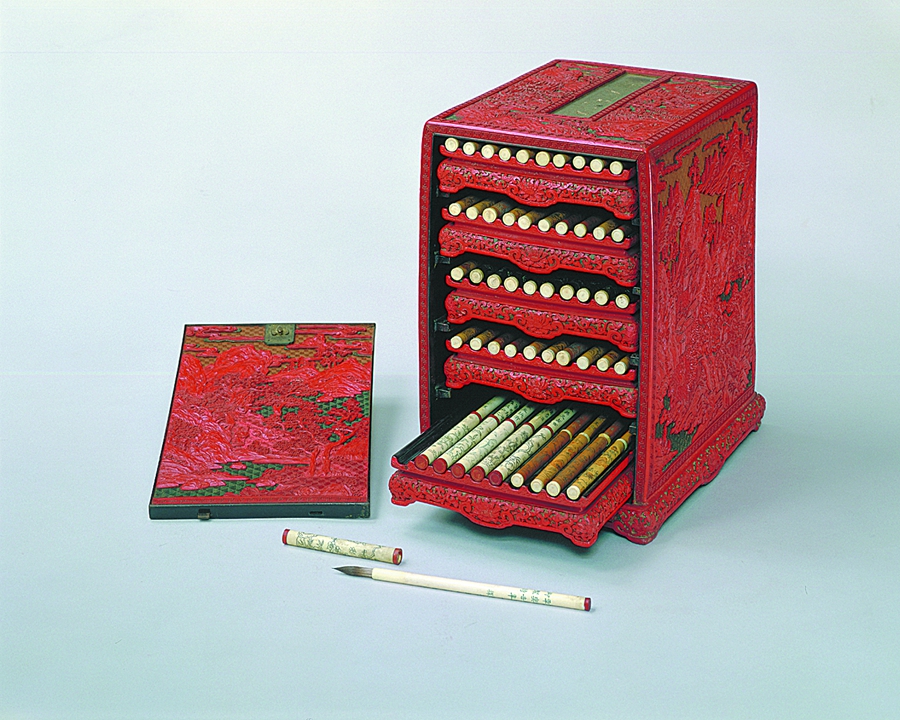

Of course, the "Four Treasures of the Study", referring to writing brushes, paper, ink and the inkstone (mortar to grind the ink), are the highlights in the exhibition. Exquisitely manufactured stationery, some items of which were owned by royals, may reflect how devoted the literati were toward their work.
"The literati's philosophical thinking concerning heaven and earth could have also been inspired through other exhibits on show, such as jade and bronzeware," Wang adds.
In ancient China, jade and bronze artifacts bear key roles in traditional rituals of worship and reflect people's views about the universe, Wang says. They are commonly seen in studies, like an exhibited bronze vessel dating back to the Shang Dynasty (c. 16th century-11th century BC), and a Qing Dynasty (1644-1911) jade cong, with a pattern that first appeared more than 5,000 years ago.